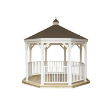Installing bike racks promotes sustainable urban transport while beautifying cityscapes. However, cities have zoning laws and regulations around rack placement, design, and permitting. Understanding these guidelines ensures your new racks comply with legal requirements while still providing convenient, secure parking options. Read on to explore key considerations and best practices for navigating bike rack codes.
Why Invest in Bike Racks?
Bike racks encourage cycling, a zero-emissions commute option that reduces traffic congestion and air pollution. They signify your organization's commitment to green transportation alternatives. Other benefits include:
- Improved mobility for all residents
- Healthier, more active communities
- Increased foot traffic for local businesses
- Demonstrated leadership in sustainability
Rack placement plays a crucial role in utilization rates. Follow zoning guidelines to direct parking to optimal areas while avoiding compliance issues.
How Installing Bike Racks in Cities Improves Traffic
More bikes on city roads directly decrease traffic issues by reducing the number of cars, but thoughtfully placed racks also optimize mobility indirectly. Strategic on-street bicycle parking opens up more spaces for all users by consolidating parked bikes. Removing bike clutter from busy pedestrian areas likewise improves general access and traffic flow.
Prioritizing bike transportation encourages cycling and incentivizes mass transit use through better multimodal connections, which in turn reduces traffic congestion. The consistent enforcement of rack usage discourages unsafe bike parking that blocks sidewalks. Proactive bike infrastructure improves the efficiency of alternative forms of transportation.
What Are the Legal Requirements for Bicycle Parking Spaces in Cities?
The explosion in urban cycling has municipalities racing to enact bicycle parking ordinances to guide sustainable growth. These policies legally obligate developers and property owners to provide the minimum number of bicycle parking spaces required based on square footage, building occupancy limits, zoning, construction type, and land uses.
Expect a higher number of required bicycle parking spaces for dense residential and commercial zones compared to industrial areas or single-family homes. Language also covers permissible locations, rack types, spacing rules, access paths, lighting, and weather protection. Strict downtown zones may further govern styles and customization for aesthetic cohesion. Understanding baseline rack requirements avoids costly retrofits down the road as cycling rates rise.
Zoning Requirements for Bike Racks
Your city’s zoning code defines allowable rack locations, spacing rules, sizes, designs, and other specifics. Common considerations include:
- Setback Minimums: Rack placement must allow adequate clearance from streets, alleys, driveways, and intersections for safe visibility. Typical setbacks range from 2-5 feet.
- Sidewalk Allowances: Determine if racks can be placed on sidewalks or just on private property. Sidewalk racks may require a public right-of-way permit.
- ADA Accessibility: The Americans with Disabilities Act (ADA) regulates the rack height, reach ranges, and clear floor space for disabled access.
- Visibility Standards: Racks should be visible for convenience and security. Ordinances may prohibit visual barriers like walls, fences, or foliage from fully obstructing sight lines.
- Loading Zones: Avoid infringing on adjacent loading zones, bus stops, taxi stands, and other access areas. Check for minimum distance requirements.
- Historic Districts: Specialized rules govern rack design and placement within historic districts. Expect closer oversight on aesthetics and footprints.
Following the zoning specifics for your area avoids headaches down the road. Where codes limit ideal parking solutions, file variance requests with supporting data on the benefits.
Can Vehicle Parking Spaces be Converted into Bicycle Parking Spaces?
Cities actively encourage retrofitting street vehicle parking into bicycle parking spaces by relaxing zoning limitations, allowing encroachments, and subsidizing construction costs – especially near transit connection points. By wisely redistributing automobile parking spaces to reflect usage levels, urban planners designate parking to best serve actual resident and visitor transportation preferences.
Converted spaces must still adhere to amended guidelines regarding space dimensions, rack specifications, and access paths. Since bicycle parking requires only a fraction of the space, transitions are highly space-efficient. Lead the shift toward sustainable transportation in your neighborhood by increasing the availability of long-term bicycle parking spaces.
Permitting Process for Bike Racks
Some cities require permits before installing racks, while others are more flexible. Be sure to look into your local laws. Key steps may involve:
- Submit Designs: Provide rack specifications like dimensions, materials, colors, hardware, and anchoring methods. Photos, drawings, or product cut sheets simplify reviews.
- Right-of-Way Permit: If racks will occupy part of a public passage like a sidewalk, apply for a right-of-way usage permit. Municipalities regulate these spaces.
- Historic Approval: Historic districts commonly require an extra design review step even for minor structures like racks. Ensure conformity with historic guidelines.
- Encroachment Allowance: If racks or awnings extend over property lines, an encroachment permit from the local Public Works department may be necessary.
- Fees: Permit and inspection fees apply. Costs vary greatly but typically range between $25-$150 per rack.
- Schedule Inspections: Certified inspectors may need to approve rack placements before, during, and after installation to ensure bylaw compliance.
Understanding permitting procedures helps you avoid wasting time and money from reworking non-compliant racks. Streamline approvals by submitting thorough, accurate plans demonstrating zoning alignment.
Liability Considerations with Bike Parking
While bike racks provide a public good, you must weigh liability risks on your property. Key concerns include:
- Safety Hazards: Poor rack placement can pose tripping dangers and injury risks for pedestrians. Stray bikes may also endanger those with vision impairments.
- Theft and Vandalism: While rare, damage and theft remain a possibility. Use high-quality racks with tamper-proof mountings to mitigate risks.
- Abandoned Property: Confiscate and remove bicycles abandoned for extended periods to keep racks usable. Follow local ordinances for holding periods before disposal.
- Usage Waivers: Post signage requiring riders to park at their own risk releases your organization from liability for damage or theft.
Mitigating Legal Risks
To limit liability, follow these best practices:
- Place racks in highly visible areas near building entryways
- Allow adequate clearance for normal foot traffic and those with disabilities
- Specify theft-deterrent and tamper-resistant racks
- Inspect racks routinely and address issues like damage or vulnerabilities immediately
- Install signage about usage terms and parking policies
Document your due diligence in providing secure parking through inspections and signage.
Providing Safe and Monitored Bicycle Parking
The safest and most utilized racks reside in well-trafficked locations under casual surveillance to prevent theft and damage. Seek opportunities near building entrances, transit access points, parks, and public spaces while avoiding creating traffic hazards. Security cameras offer affordable monitoring for more remote racks.
Restrict access to enclosed bike cages or indoor parking areas with customized entry permissions. Routine maintenance checks will ensure lighting, landscaping, and any enclosures remain functional. Responsibly managing racks minimizes risks and keeps cycling an integral component of urban living.
Promote Sustainable Urban Transport with Furniture Leisure Bike Racks
As a leading provider of high-quality, commercial-grade bike racks since 2003, Furniture Leisure helps customers find the perfect racks to meet both functional needs and design aesthetics. Our extensive selection of secure, specialized bike racks complements the landscape of any urban environment while encouraging green transportation.
Furniture Leisure makes it easy to elevate cities with commercial bike racks. Our racks comply with the most stringent codes and regulations across the United States while still reflecting the unique character of your city. By investing in bicycle infrastructure, you actively promote healthier commuting habits and demonstrate civic leadership in sustainability. Our bike racks provide the catalyst for more vibrant and connected communities.
Secure your bikes with commercial racks from Furniture Leisure.
FAQs
What are the standard dimensions for bike racks?
Typical rack dimensions accommodate 2” tires and handlebar widths up to 24”. Allow at least 30” spacing between racks and surrounding obstructions such as walls, curbs, and fences. ADA-compliant designs require a clear aisle width of at least 36".
How far should racks be placed from a road or sidewalk?
Typical setback minimums are 2 feet from curbs and 5 feet from intersections. This allows for safe vehicular visibility. Check local zoning for specifics.
Do I need a permit for bike racks in my city?
Regulations vary greatly by region. Some cities require permits even for private property racks while others are more permissive. When in doubt, contact your zoning office.
Can I be liable if a parked bike gets stolen or damaged?
While unlikely, you share some responsibility in providing secure parking as a property owner. Mitigate risks through high-quality racks, usage terms signage, and insurance.

















































































































Leave your comment